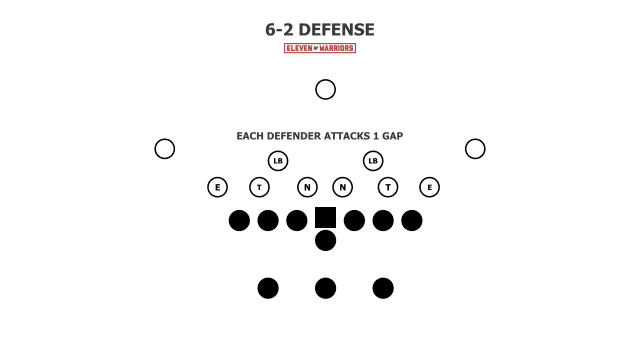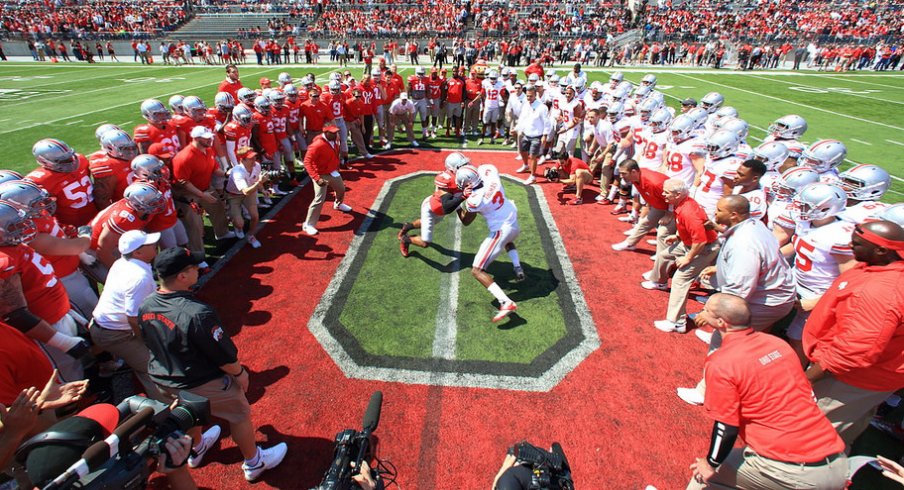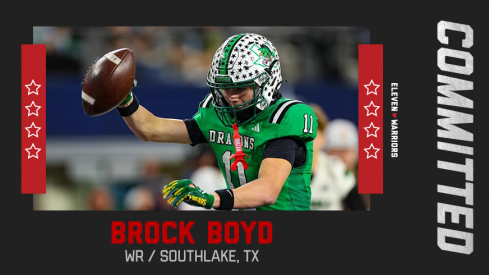2026 four-star wide receiver Brock Boyd flips his commitment from TCU to Ohio State.
Oklahoma. Circle Drill. Nutcracker. Man-Makers.
Regardless of what your coach may have called it, if you've ever strapped on a helmet and shoulder pads at any level, you probably remember the first time they were forced to participate in football's most well-known, and sometimes brutal, drill. Often held on the first day of full-contact practice, the drill provides no quarter for and forces anyone involved to showcase both physical and mental toughness in front of the entire team.
The basic design is simple: two players line up across from one another in a narrow space between two tackling dummies, simulating the battle inside between offensive and defensive linemen. The goal is simple: move the man across from you once the whistle blows.
While the drill reinforces the most fundamental of blocking and tackling techniques at full speed, the real value to many coaches has long been its ability to showcase the hard-nosed, old-school fortitude that has been associated with the game since its inception.
However, that's not necessarily how the drill itself was designed. In 1947, Oklahoma head coach Bud Wilkinson began implementing the 5-2 defense that was the precursor to the modern 3-4 system. While most teams had placed six defenders on the line of scrimmage to control every gap against the single-wing offense during the 1930s, Wilkinson wanted to find a new way to defend the increasingly popular split-T offense.
Not only did Wilkinson want to gain an extra defender in the secondary to handle the many available options in the split-T's passing game, with so much action taking place in the backfield, he wanted to keep his linebackers free to read and react accordingly. To do so, he needed the three interior linemen (the nose and two tackles) to control two gaps at once. Instead of attempting to shoot a gap between two blockers, the down linemen would line up directly across from the man in front of him, engaging quickly at the snap before shedding the block and getting to the ball.

To ensure his defensive linemen could shed blockers effectively, Wilkinson devised the drill, running it countless times over the years. Both the scheme and the drill proved so effective that fellow coaches began running the system themselves, giving due credit by naming both after the team that made them famous.
In his version, the defensive lineman works to shed the block of the offensive lineman and get to the side in which the back has decided to run. If the defender chooses a side too early, the back can easily slip through the other way, just as a running back would in a game.
As David Fleming of ESPN.com wrote about the drill in 2015,
"We just called it the 'one-on-one,' and, oh, I couldn't begin to count the number of times Bud made us run that drill," says Jack Santee, a member of the Sooners' first national championship team in 1950. "It was a competitive, spirited thing, and it's at the very foundation of what we built at Oklahoma."
Wilkinson constructed a dynasty that won three national titles and, between 1953 and 1957, an unprecedented 47 straight games. All along, curious coaches from around the country descended on Norman to steal the Sooners' secrets. And thus the Oklahoma drill became one of the best examples of copycatting in football. By the time Wilkinson retired in 1963, the drill had spread as far as Green Bay, where Vince Lombardi considered it an essential measure of manhood.
Over time, the system fell out of favor with most coaches as it became increasingly difficult to field players capable of executing the two-gapping style up front. One could either recruit the few players with both the size and agility to do so naturally or rep the brutal drill over and over with the players you had on-hand. While the former proved difficult in theory, the latter did so in practice, as injuries would often mount up at an excessive rate throughout the course of the season.
Without direct application to a specific scheme, the drill began morphing into the many names and variations that still exist. Sometimes it's a one-on-one battle for inside hand position, while other times there is a ball-carrier to be tackled (as seen in the Oklahoma video above). Other versions feature up to as many as three players on each side of the ball, while others ask players to begin the drill on their backs.
But as the game has changed from a compact test of strength and toughness to a spread out contest of speed and execution, the drill's place in it had evolved as well.
The NFL long ago abandoned it out of fear of injuries, as proven by a brief revival during Mike Singletary's short stint in charge of the San Francisco 49ers from 2009-10. Though the hall-of-fame middle linebacker wanted to ensure his team would be the toughest in a softening league, he was forced to relent, shortening it to only three seconds and discouraging players from taking their opponent to the ground.
At the college level, where there is far more focus on teaching fundamental techniques, many coaches continue to follow Singletary's lead. Ohio State's Circle Drill is similar, as it emphasizes leverage and hand placement while still providing a mental test by forcing players to compete in front of thousands of fans before the annual spring game.
But while many wonder whether the reward of the original drill outweighs the risk of potential brain injury (especially at the youth level, where both increase greatly), many coaches have begun thinking about the drill in a way that would probably make Wilkinson proud.
Now, as much of the game's action takes place outside the hash marks, defenders must be able to shed blockers and make a tackle in space, while offenses continue to challenge their ability to do so with a constant barrage of wide receiver screens. Last summer, a coaching clinic video emerged of Georgia head coach Kirby Smart describing a new way to practice defending those screens, taking the best part of Wilkinson's drill and applying it to the modern game, calling it Millennial Oklahoma (warning - language NSFW):
"Y'all know Oklahoma as, there's two bags, just like as wide as this little row right here, and there's like three dudes right here doing a board drill, and there's a linebacker and a running back, or a receiver and a DB - that's Oklahoma right? This is Millennial Oklahoma.
"We have decided that Millennial Oklahoma is the new way to do Oklahoma, which I can live with, because it's what we play offensively."
The drill lines up three receivers against three defenders, mimicking the 3x1 formations that have become so common in the game today. At the whistle, a coach will throw the ball to any one of the three receivers, leaving the other two to block in space and creating a one-on-one matchup for the ball-carrier. To keep things fresh, the offense can combine the screen with pass patterns to ensure the defense stays honest.
"Now that it's in space... it's Millennial Oklahoma," Smart added. "You're going to do your Oklahoma in a box. Well, Oklahoma in a box doesn't exist unless you're playing certain teams anymore."
Immediately, coaches all over the country level began implementing the drill in their practices, applying the same principles of toughness and effort to the modern adaption of the game. Since blocking on the outside relies far more on technique than strength, the drill can be run far more often, as less of a toll is taken on the players for each rep.
Just as Wilkinson's drill warped and evolved to meet the needs of a given team's scheme, this bubble drill has already done the same. But whether there be two players on each side, a defensive lineman there to work on pursuit angles, or trash cans instead of blockers, there's no difference in what makes a player successful.
As Smart pointed out, the players who are "tougher, more physical, and like contact" will always stand out in practice, no matter which way the game evolves.



